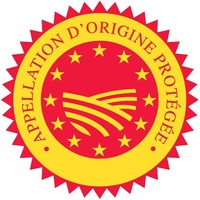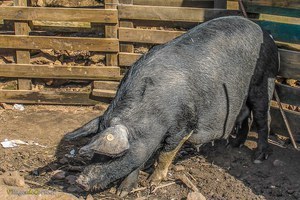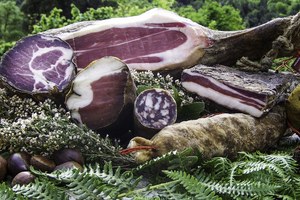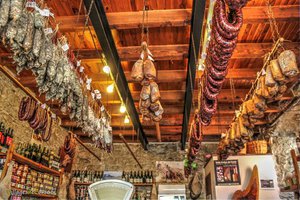- Activities
- Gastronomy
- Corsican charcuterie
- Corsican PDO charcuterie
Charcuterie corse AOP/AOC : Lonzu, Coppa, Prisuttu
Where can I find the AOC charcuterie specifications?

All AOC/AOP charters are public and available on the Internet from the government website by simply searching for these terms: "cahier des charges aoc [produit cible]". The INAO - Institut National de l'Origine et de la Qualité - is responsible for managing labels in France. If you're at a loss for acronyms, here are a few references to help you get to grips with the definitions of AOC, AOP and IGP.
The 3 Corsican AOC/AOP cured meats: Coppa, lonzu, prisuttu
Since 2012, Corsican charcuterie has benefited from the AOC label for three cured meats:
- Lonzu AOP: Download specifications
- Coppa PDO: Download specifications
- Prisuttu PDO Download specifications
Corsican PDO charcuterie is a misnomer, since the label covers only three types of cured meats. If there is no PDO label for other cured meats such as figatellu, this is because production techniques vary too widely from one region to another to enable a common set of specifications to be defined.
Creation of a PGI in 2023 for other major cured meats
On July 27, 2023, the European Commission approved a PGI (Protected Geographical Indication) for the main charcuterie products not covered by the PDO: Salsiccia (Corsican sausage), Figatellu, Panzetta and Bulagna.
Common PDO label requirements
The three PDO cured meats (coppa, lonzu, prisuttu) have around 70% of their specifications in common, notably in terms of rearing techniques, feed, geographical distribution, and maturing and drying standards. All that's left is the specific manufacturing process and the description of the finished product.
Pig feed
The feed regulated by the PDO label covers three age groups: piglets (up to 2 months), the growth phase (between 2 and 10 and a half months), and adult weight (over 10 and a half months).
For the first two age brackets, the required feed is based on nutritional composition (protein, cellulose and fat content) rather than on a prescribed diet.
On the other hand, the last age bracket, known as the "finishing" age bracket, is the one that gives the charcuterie its full character before slaughter. It lasts a minimum of 45 days and requires a diet of chestnuts and/or acorns, with the possibility of adding up to 30% barley as a supplement.
The PDO prohibits the use of antibiotics on pigs.
Corsican pigs and problems
Pigs must be exclusively Corsican. However, the majority of pigs on our farms are born and raised in Corsica, but crossed with Duroc or Landrace breeds. This means they can't benefit from the PDO label, even if they wanted to produce Corsican pigs, as the number of 100% Corsican pigs on the island is reduced to just over a thousand. As a result, these breeders can no longer use certain designations, such as "Coppa de Corse", even if they meet all the other requirements (breeding, feeding, processing).
Towards a change in specifications?
While today, the blocking factor for many breeders is the breed of pig, several articles published in 2018, such as the one in Corse Matin Le label AOP ne doit pas être pris en otage (The PDO label must not be held hostage ), leave the door open to a possible evolution on this subject.
Geographical limits excluding the coast
For a charcuterie product to be considered PDO, the pigs must be born, raised and slaughtered in Corsica in a suitable environment. In other words, everywhere except the coast. A list of communes has been drawn up in the charter, indicating the towns and villages where pig farms may be located in whole or in part. It should be noted that this list includes almost all the communes, since even Ajaccio and Bastia, with their communal areas, have high-altitude zones suitable for pig farming. These regulations prevent carcasses from being imported from the mainland and processed on the island, while at the same time ensuring that the finished product is considered an authentic Corsican charcuterie.



